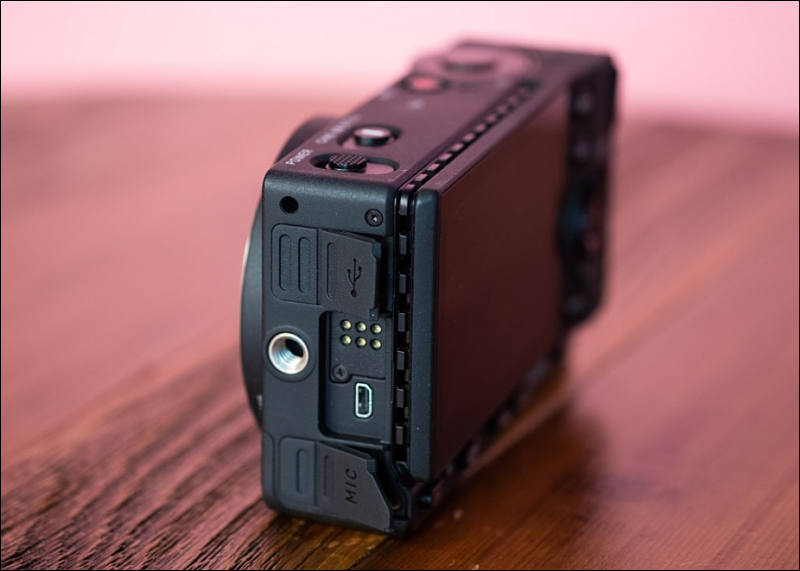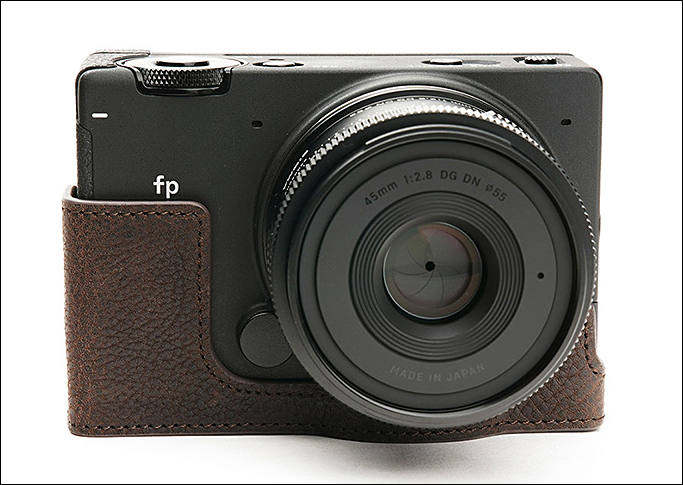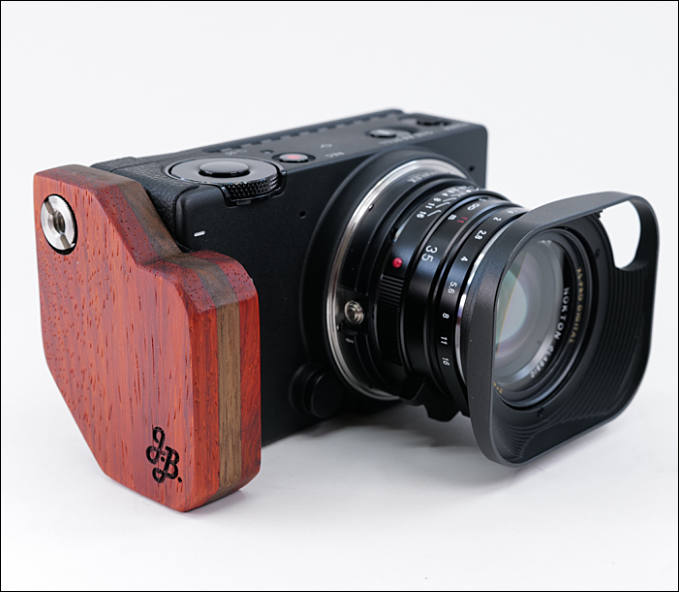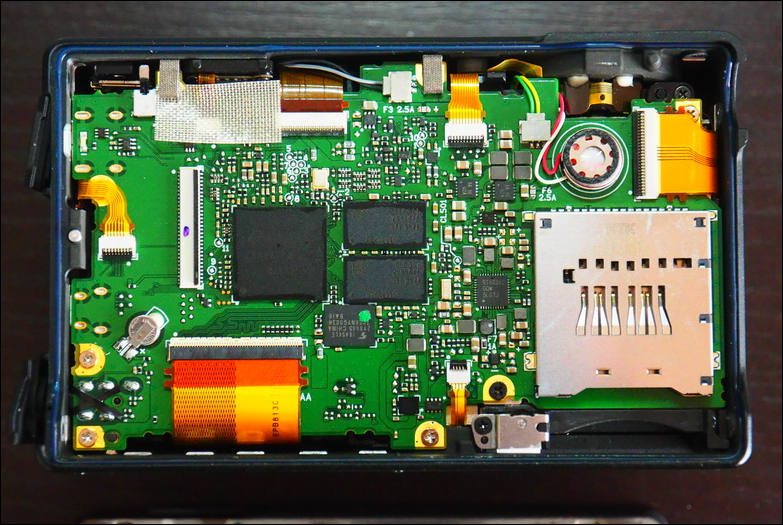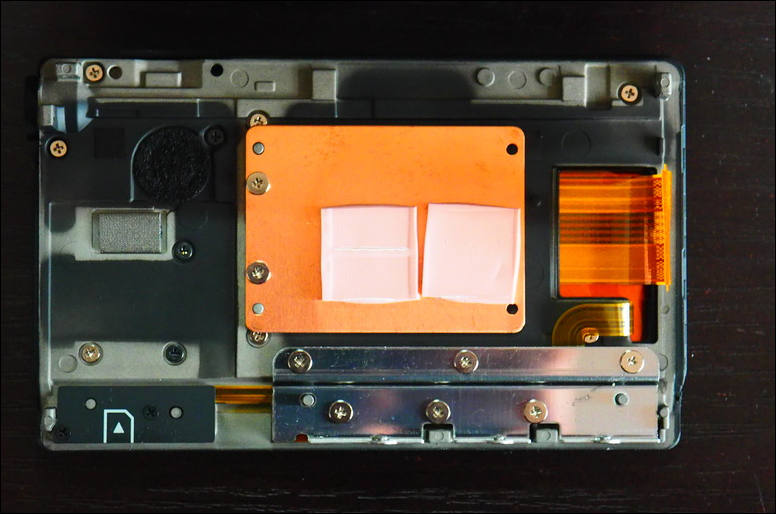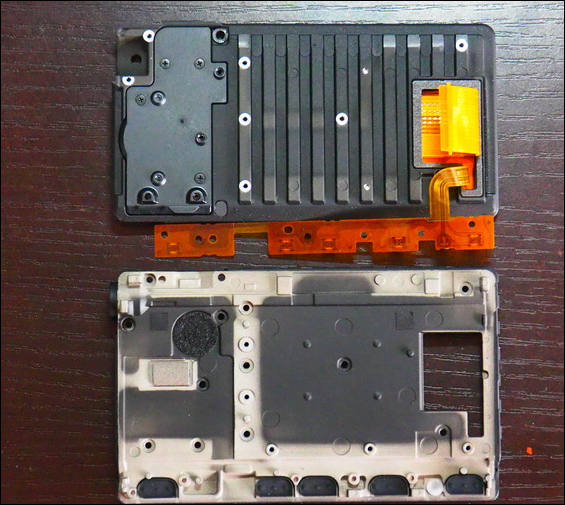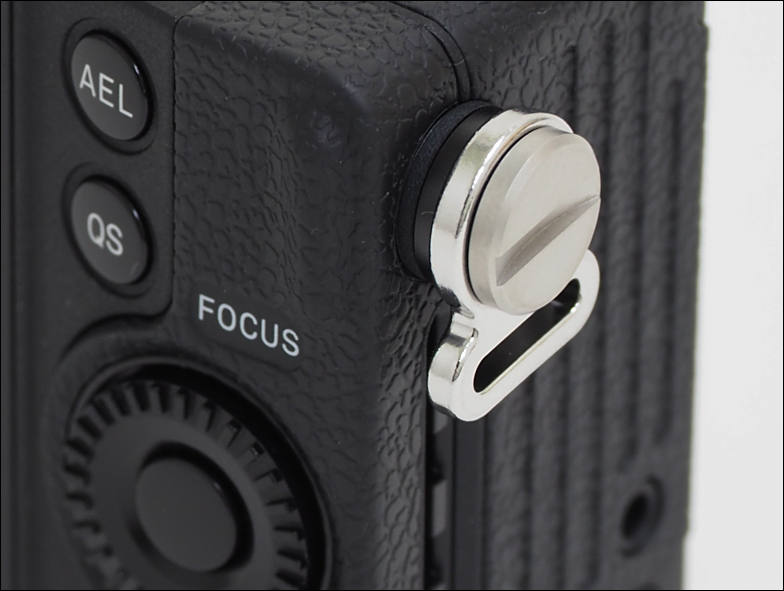
It allows to keep PV going, with more focus towards AI, but keeping be one of the few truly independent places.
-
SIGMA is pleased to announce the firmware update schedule for the SIGMA fp.
Firmware update Ver.2.00 will be released in summer 2020. It will improve the camera’s capability with the addition or improvement of a number of functions including CinemaDNG playback, cinemagraph functionality and movie recording with the Director’s Viewfinder.
Benefits of the update
- Supports CinemaDNG 120/100fps (FHD 8bit) shooting.
- Supports cinemagraph functionality.
- Supports still image shooting during live view and movie shooting in Cine mode.
- Supports HDR shooting.
- Supports Director’s Viewfinder recording function.
- Supports SDK (Software Development Kit).
SIGMA is also developing firmware Ver.1.02, which corrects card errors when using certain SD cards, and introduces added lens aberration correction processing. This is scheduled to be released on Wednesday 18th March 2020.
-

 sa12406.jpg800 x 571 - 45K
sa12406.jpg800 x 571 - 45K -
Does this camera have raw hdmi yet? The dng files are massive.
-
RAW recording via HDMI. This update will allow connection to an external recorder like the Atomos Ninja V and record to a compressed RAW format
Looks like plans only.
-
as long as hdmi raw doesn't line skip like z6.
-
New firmware
Benefits:
- It has corrected a phenomenon affecting a very small number of individuals whereby DNG files could not be processed during interval timer shooting.
- It has corrected a phenomenon whereby video footage appeared distorted when recorded in MOV format and UHD resolution.
- It has corrected a phenomenon whereby video footage appeared distorted when Distortion Correction and Vignetting Correction operated incorrectly near infinity focus.
- It has corrected a phenomenon whereby a card error occurred when using certain SD cards.
- It has corrected the phenomenon whereby, depending on the Exposure Bracket setting, the camera would shoot bracketed exposures even when the function was set to off.
- It has corrected a phenomenon whereby the brightness of the monitor changed depending on the subject even when the monitor exposure in M mode was set to "on".
- It has corrected a phenomenon whereby the monitor exposure display in M mode was not displayed correctly when using a mount adapter without an electronic contact.
- It has corrected a phenomenon affecting a very small number of individuals whereby the power consumption was greater than usual when the power was turned off.
https://www.sigma-global.com/en/download/cameras/firmware/#fp
-
Sigma Fp Teardown
( use Google translate for English, and other languages)
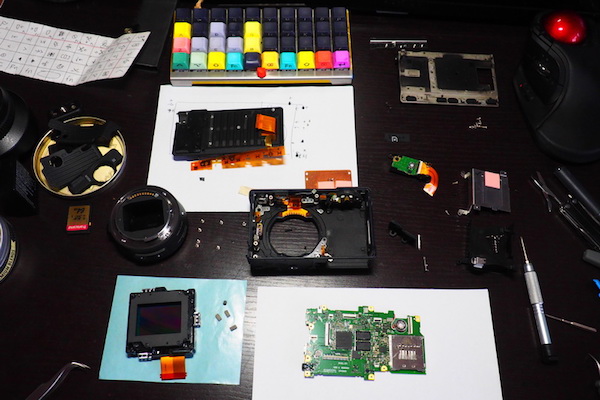
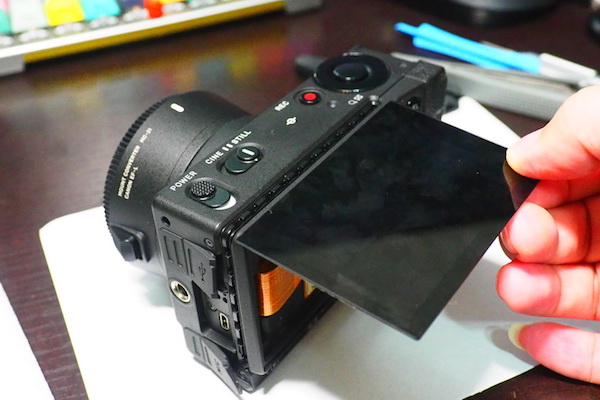

 sigma teardown1.jpg600 x 400 - 94K
sigma teardown1.jpg600 x 400 - 94K
 sigma TD2.jpg600 x 400 - 84K
sigma TD2.jpg600 x 400 - 84K -

 sa12713.jpg783 x 525 - 108K
sa12713.jpg783 x 525 - 108K
 sa12714.jpg796 x 528 - 149K
sa12714.jpg796 x 528 - 149K
 sa12715.jpg776 x 514 - 56K
sa12715.jpg776 x 514 - 56K
 sa12716.jpg565 x 505 - 60K
sa12716.jpg565 x 505 - 60K -
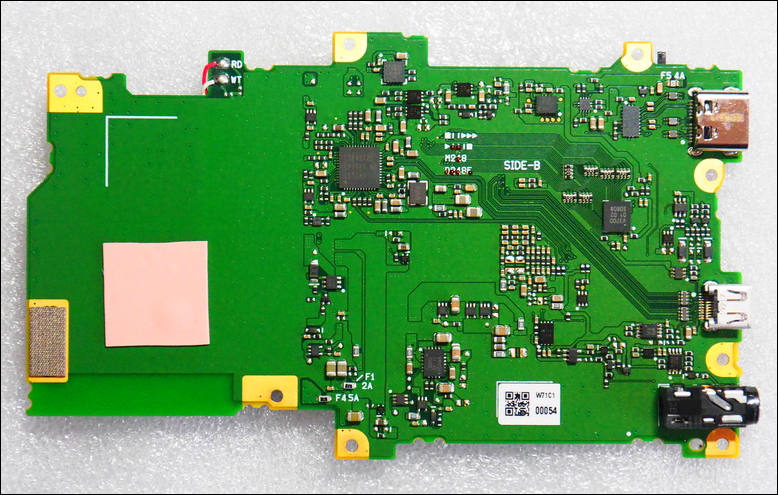
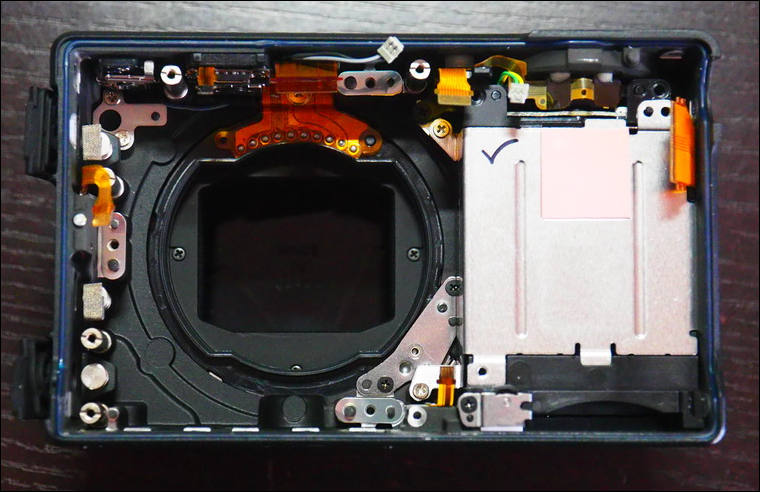
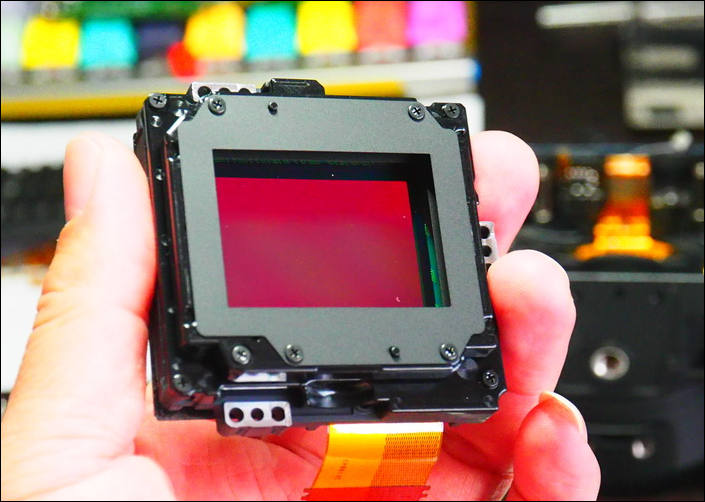

 sa12717.jpg778 x 495 - 97K
sa12717.jpg778 x 495 - 97K
 sa12718.jpg760 x 492 - 66K
sa12718.jpg760 x 492 - 66K
 sa12719.jpg705 x 502 - 56K
sa12719.jpg705 x 502 - 56K -
Kazuto Yamaki, CEO of Sigma interview:
Last year you released your first full-frame camera, the fp. How has it performed in the market?It sold quite well at the beginning. Early adopters were very interested, and purchased the camera immediately. We’ve received a lot of emails from customers, which I’ve read, and we have a lot of customers who are very happy and satisfied with the fp. We’ve also been monitoring feedback online, through Facebook and Twitter; things like that.To be honest though, sales have declined considerably [since launch], especially in Europe and America. It’s still selling well in Japan, but overall sales have been lower than expected.Why do you think that is?There are several reasons, I think. First of all, changing systems is a big investment for customers. So even though we have potential customers who are really interested in the camera, I think a lot of them are waiting to see how the L-mount system develops. We don’t have enough compact lenses, suited to the fp. We’re currently developing several lenses of that type. Once we have that kind of lineup, I think a lot of potential customers may decide to buy the camera.Due to the coronavirus crisis, we had to cancel many events. So we’ve lost an opportunity to let customers try our cameraThat’s one thing. The second thing is that in Japan, we’ve found that ‘touch and try’ events have worked really well in convincing customers that the fp is a good camera. After they try it, many of them buy it. We had a plan to conduct many such events, but due to the coronavirus crisis, we had to cancel many events in Japan, in China and in Europe. So we’ve lost an opportunity to let customers try our camera. That’s disappointing, but once things calm down we’ll start again. -
Firmware update Ver.2.00 ( additional improvements not yet listed on website, from Sigma FP user group)
The flickering issue will be fixed with the next firmware update (ver 2.0). Also the DNG in-camera playback function will be added.About the contrast detection autofocus. This is a specification so there is no change, but the performance will improve with the next firmware update. -
All sigma has to do to make this sell is lower the price. Put it in the gh5 space and then watch.
-
Right now best idea is just not supply new product batches and go to rest for at least 6-8 months.
-
This camera has two big issues to adoption, lack of an onboard compressed raw format. (Prores/Braw) And the absence of an OLPF to eliminate moiré.
This is a good first effort camera, but I can't see it catching on when you can pick up an S1 and not have any of those issues.
-
This camera has two big issues to adoption, lack of an onboard compressed raw format. (Prores/Braw) And the absence of an OLPF to eliminate moiré.
Removal of OLPF ahd been suggested by pros, as I understand.
And lack of compressed raw is not their fault, but RED one. As RED and Apple played comedy last year with the lawsuit, so lot of compenies hoped that end of this horrible RED paten troll is near, but nope.
-
GIZMODO INTERVIEW Did the "SIGMA fp challenge" work? I talked to the president of Sigma, Mr. Yamaki.
author Takumi Kamiyama ( translated from Japanese )
The piece of the puzzle that hadn't been a part of it, the SIGMA fp. The full-frame mirrorless "SIGMA fp" was introduced with the catchphrase "deconstructing the digital camera. SIGMA fp". The term deconstruction was originally a philosophical term, and Wikipedia says that it "destroys the old and It is introduced as "the philosophical activity of building something new" and so on. These words give a very challenging impression.Now that the SIGMA fp has been on the market for some time, I'm wondering if the challenge was successful. So. In this issue, we interviewed Kazuto Yamaki, President of Sigma Corporation, the developer of SIGMA fp, the digital What was the attempt to deconstruct the camera in the first place, and was it possible to build something new? Gone are the days when technology could make a camera better.Q: Please tell us how you envisioned the SIGMA fp camera.President Yamaki: Originally, I wondered how we should develop our cameras in the future. We thought, "Well, it's not going to sell if we make an "ordinary camera". Even if we made an "ordinary camera", it wouldn't sell well. But we are conscious of the fact that we dare to do what other companies cannot do.Q: The notebook describing the development concept of SIGMA fp was revealed at an event the other day. The situation that digital cameras are in" and "the dissatisfaction that users felt with the digital camera market". We have read that it was conceived in light of this. How do these relate to each other?President Yamaki: Digital cameras continued to grow between 2000 and 2012. There was a time when technology was advancing and cameras were getting better. The more pixels, the higher the resolution, and the higher the resolution, the more three-dimensional the picture looked. I've learned to take photos that are more pleasant to look at than sticky descriptions. It was. However, after peaking in 2012 or 2013, it became difficult to realize the difference in technological advancement. I did. The manufacturers are still focusing on specs, and it's a pretty frustrating situation for customers. I felt that there was no such thing.Maybe it's better to say that there were times when I was forced to use an over-specified camera. When it comes to SLRs and mirrorless cameras, they are still big and heavy, and it is hard to take them out easily. There is none. If you are a camera enthusiast, you use a mirrorless camera for some occasions and a DSLR for others - it's normal to use different cameras for different occasions. In other situations, they will use a compact camera or a smartphone - it has become commonplace to use different types of cameras. I think there were, but I still think there are pieces of the puzzle that we haven't been able to fit in.Q: In order to determine our company's position, I think it's a good idea to make a note of what you think about the technology, the market situation, etc. After repeated revisions, the notebook in question was completed at the end of 2016. Can you get more specific about the missing pieces of the puzzle that you mentioned?President Yamaki: I also use single-lens reflex cameras. I know the reassurance of such a camera that I can hold it steady and take good pictures. I like it. But I also think that's a tough thing to do every time.For example, I don't want to make my luggage too big when I'm traveling abroad. But even in a situation where you want to be light, it's a great view, and the full-size sensor allows you to get a good picture. You know, there are times when you wish you could have kept it. And then you wish you had brought a camera with you, but you couldn't bring it with you. So we wanted a camera that would be at hand in those situations.I'm often invited to dinners, so I could easily bring it out for those occasions and feel at home. We also wanted a camera. To be more specific, we have a relationship with Leica as part of the L mount alliance. I have a relationship with him. I sometimes have dinner at a restaurant with the owner of Leica... he has an M series. With the M series, you can take it out in a classy restaurant and not feel too uncomfortable. What I wanted was a simple camera that would fit in with its appearance and not make too much of a statement.Q: The SIGMA fp has a Bayer sensor instead of the original Sigma Foveon X3. It seems to float a little bit compared to the previous generation of cameras, which had rectangular bodies. What is the connection between this camera and its predecessors?President Yamaki: I don't intend to do anything that unusual. I envisioned the SIGMA fp as a camera to use when I go on a business trip, but I had been using the dp for a long time before. The dp series is also based on the concept of providing the highest image quality in a compact form.When it comes to a full-size camera that can fit in a business bag, it's not surprising that a full-size sensor is a good fit. It's like a Bayer, I guess. I can't fit a full size Foveon sensor in a small chassis. The image processing would be very heavy and the board would be large, and it would be lopsided like the dp series. You want a compact camera, then the sensor you'll use will be a Bayer, in that order.Q: The design of the SIGMA fp has an unobtrusive logo. It's a target. Many cameras have the manufacturer's logo in a prominent place, and some professional photographers dare to put it Some people turn it off. Is there a relationship between the two?President Yamaki: We had a lot of different opinions within the company. One of the engineers said that by eliminating the logo, the models (the people being photographed) wouldn't be able to see the logo. (They'll look at the lens) and the benefits of not having your logo show up in the photo. We had an opinion on this.After sharing the concept of the design, we worked with an outside designer and our design I left it up to the team, but those benefits aren't the main reason for the current design. It should be. Is the "current conventional wisdom in the industry" really the right thing to do? And as a result of the doubt, "I don't want it," and I should have done so. I guess it's not so much about logic as it is about what's beautiful.I don't like things that have a sticky logo attached to them. The shape of the product itself, the texture of the materials, the surface treatment, the atmosphere created by the paint - the overall impression I get is that it's a beautiful product. Our goal is to have people think of our products as being Sigma products. Our goal is not to have the Sigma logo as a reason for being a Sigma product, but to have people say, "That's just like Sigma. We want to be able to do this. These points are well communicated, and the members involved in the design of the logo. I think these designs came about because I thought I could eliminate most of them. -
Part 2: GIZMODO INTERVIEW Did the "SIGMA fp challenge" work? I talked to the president of Sigma, Mr. Yamaki. :
Q: Can you tell us about how it has felt since its release? has been accepted by what kind of users?President Yamaki: "Apart from the physical disadvantages (ed. note: SIGMA fp has an electronic shutter only, and is prone to the rolling shutter phenomenon), the SIGMA fp is a professional camera for photographers and cinematographers. Apart from the physical disadvantages (ed. note: SIGMA fp is electronic shutter only and is prone to rolling shutter phenomenon), professional photographers and cinematographers are more likely to use it. Our goal was to create gear that people can use with peace of mind, even if it's just for a few minutes. I think we've achieved a certain degree of success as a camera.It's also a camera with an unprecedented concept, so it's popular with people who are sensitive to new things. We thought we would get it, but this one was more than we expected. If you like gadgets, have a lifestyle, or have a strong sense of aesthetics I was surprised that more of you are enjoying SIGMA fp than I am!Q: You own both DSLRs and mirrorless cameras, and you also use a smartphone with a high-performance camera. I was imagining a user who would use it and have a SIGMA fp in it, but now the people I mentioned are using it as their main camera, aren't they?When I look at the photos they've taken, I see that they are very good at what they do. They actually like photography and are skilled at taking good photos. But in spite of this, there's no camera that I want, or a camera that fits my lifestyle perfectly. It's often the case that they are forced to compromise or substitute with something else because they don't have to. We're learning now by watching our customers. We're moving into an era of choosing based on "does it fit with my lifestyle?" and "what does it mean to my life?Q: Do you notice any changes in the preferences and tastes of camera users?President Yamaki: Yes, I do. The days of film cameras were somehow inconvenient. You couldn't change the sensitivity, and you could only take 24 or 36 pictures. Digital cameras came out and we entered an era in which "new things are good for convenience. The inconvenience of using any equipment has already been eliminated. You can take your phone with you at any time, but the image quality is not so good at a critical moment, or the image quality of SLRs is not so good. It's nice, but I can't always carry it around with me, or I'm happy with all of them, even if the balance is different.This is not limited to cameras, but in the age of inconvenience, consumer behavior is filled with convenience first. In the old days, we first had the three essential items (TV, washing machine, and refrigerator). But when they all get to a certain level, as they do now, the important thing is that the device is Does it fit your current lifestyle?" and "What does the device you choose mean to you? I think it's a "will you have it" thing. How much does the washing machine you choose mean to your life and how much does the manufacturer's philosophy mean to you? I think it's becoming more and more about whether it can be synchronized or not, and that's how we choose. I think it's especially colorful in cameras and the way we choose is changing very much. We're trying to make it change, but also make it feel like we have something in common.Q: Are you satisfied with SIGMA fp?President Yamaki: I'd say it's about 50 points.Q: A score of 50?President Yamaki: The camera itself is good, but what's left is the lens, the compact size that goes with the SIGMA fp. The world view won't be complete until we add a few more lenses with a "good" rating. You need a standard lens, a wide-angle lens, and a telephoto lens, and once you have them all together, you'll be close to 100 points for the system. I can use them in all kinds of situations, and above all, they're fun to use.Q: I understand that you are seriously considering expanding the SIGMA fp lens lineup.President Yamaki: Yes, we're developing a variety of lenses for this purpose. You can assume that SIGMA fp lenses will eventually come out that are suitable for use with SIGMA fp. I'd like to develop the camera itself.Q: What are your plans for developing new products in the future?President Yamaki: I wanted to do something that had something in common with the Sigma style and Sigma products. I've loved music since I was young, and my favorite musician since I was in high school was Paul Weller. There's a guy called We started out as a band called The Jam, and we were doing punk. After it broke up, we started a duo and started a unit called The Style Council. It was really cool. It wasn't just the music, but the fashion as well. It was stylish and rather jazzy, like the French Ivy style that was so popular at the time. It was a strong bossa nova influence - it's a complete change from punk. Now I think I'm going solo and doing something close to legitimate rock.Paul Weller's music keeps changing in that way, but I've been listening to him for a long time from the old It doesn't feel different to say it. I listened to the punk of The Jam, then the jazz of The Style Council, then the current rock It doesn't feel different. His style may have changed, but he himself, Paul Weller, has remained the same. I like the fact that his philosophy has not changed and that we can feel the same thing. Even though he is constantly breaking and changing his own style, you can still feel the consistency, which is a great thing! It is.As a manufacturer, we aspire to that kind of thing, and while we change our products, we feel that we have something in common. We'll do our best to make it happen. -
SIGMA fp Firmware Ver.2.00
SIGMA fp firmware is now available for download. This firmware improves various functions and the stability of the SIGMA fp.
https://www.sigma-global.com/en/download/cameras/firmware/
SIGMA fp Firmware 2.0 Released – External ProRes RAW and BRAW Recording, Dual ISO and More
Firmware 2.0 brings major updates to the SIGMA fp full frame camera. External ProRes Raw & BRAW is now supported, dual ISO enabled, CinemaDNG has improved high speed and delivery frame rates. There is also a Cinemagraph function and improvements to JPEG capture, timecode, flicker control, and auto focus.
Howdy, Stranger!
It looks like you're new here. If you want to get involved, click one of these buttons!
Categories
- Topics List23,979
- Blog5,725
- General and News1,352
- Hacks and Patches1,153
- ↳ Top Settings33
- ↳ Beginners255
- ↳ Archives402
- ↳ Hacks News and Development56
- Cameras2,362
- ↳ Panasonic991
- ↳ Canon118
- ↳ Sony156
- ↳ Nikon96
- ↳ Pentax and Samsung70
- ↳ Olympus and Fujifilm100
- ↳ Compacts and Camcorders300
- ↳ Smartphones for video97
- ↳ Pro Video Cameras191
- ↳ BlackMagic and other raw cameras116
- Skill1,961
- ↳ Business and distribution66
- ↳ Preparation, scripts and legal38
- ↳ Art149
- ↳ Import, Convert, Exporting291
- ↳ Editors191
- ↳ Effects and stunts115
- ↳ Color grading197
- ↳ Sound and Music280
- ↳ Lighting96
- ↳ Software and storage tips267
- Gear5,414
- ↳ Filters, Adapters, Matte boxes344
- ↳ Lenses1,579
- ↳ Follow focus and gears93
- ↳ Sound498
- ↳ Lighting gear314
- ↳ Camera movement230
- ↳ Gimbals and copters302
- ↳ Rigs and related stuff272
- ↳ Power solutions83
- ↳ Monitors and viewfinders339
- ↳ Tripods and fluid heads139
- ↳ Storage286
- ↳ Computers and studio gear560
- ↳ VR and 3D248
- Showcase1,859
- Marketplace2,834
- Offtopic1,319



